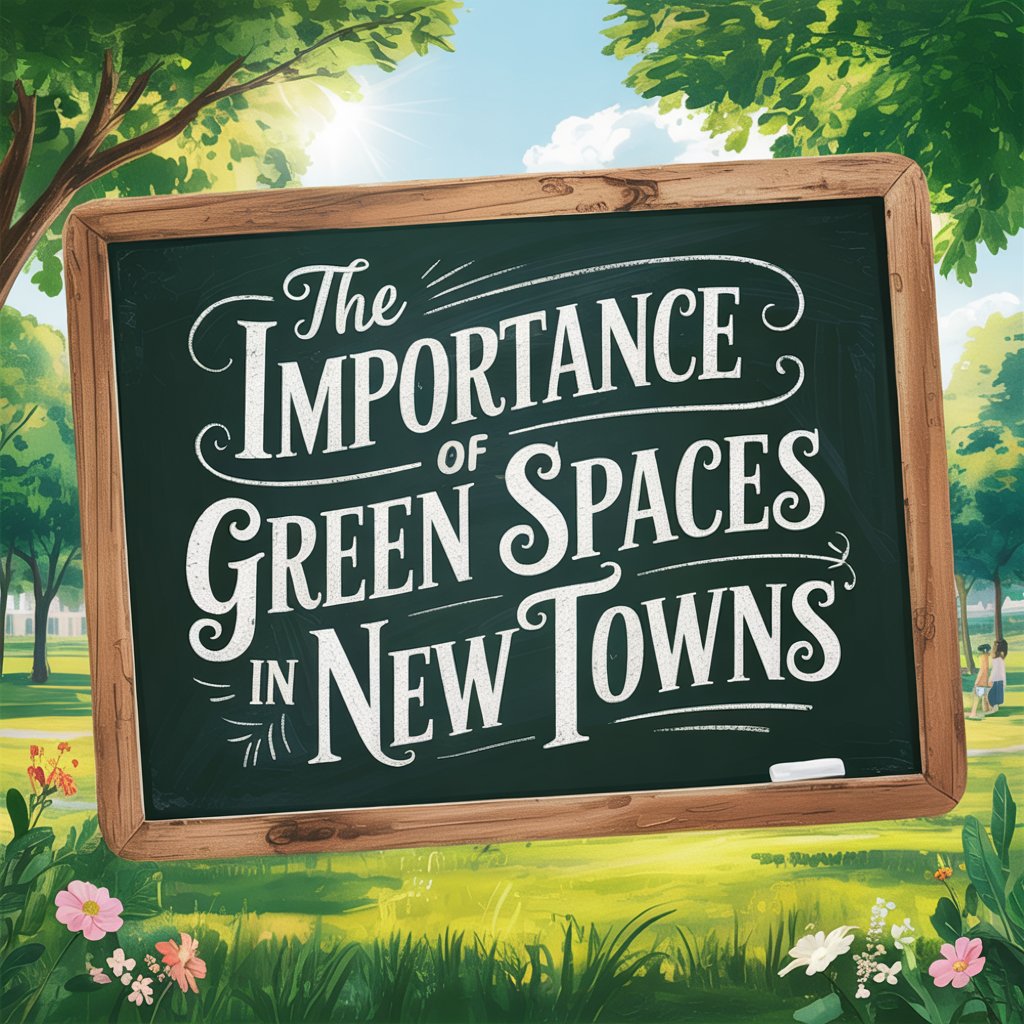Did you know that, as of 2014, around 54% of the world’s population were living in towns and cities? This number is predicted to increase to nearly 70% by 2050, with many countries going through periods of rapid urban expansion. And the UK is no exception. With so many potential projects in the pipeline, we need to focus on creating sustainable environments that will help support local communities. And one of the best ways to do this is by creating more green spaces in new towns.
Domestic gardens, public parks, and local woodlands all offer many benefits, from better health and emotional wellbeing, to improved integration and social connection. They also help communities thrive, by providing a new setting for new economic and cultural activity, and by offering a long-term focus for sustainability efforts. In this article, we’ll look at why green spaces are so important, how the planning process works, and who is responsible for ensuring there are enough green areas in new towns.
Health Benefits of Green Spaces In New Towns
Urban green spaces can offer many mental health benefits. For example, spending time in nature can help residents reduce their stress and anxiety. It can also help them manage depression and other mental health conditions. Urban green spaces provide many physical health benefits too. For example, green spaces can offer residents opportunities for walking, jogging, cycling, and other outdoor activities. This can help them improve their physical fitness and reduce their risk of chronic diseases.
It’s important to keep in mind that living near green spaces is good for longevity. In 2008, a Lancet study by Dr Richard Mitchell and Frank Popham of 40 million British people found a link between income inequality, access to green spaces, and life expectancy. The study showed that in rural areas, where everyone had equal access to green spaces, the life expectancy of those on the lowest incomes was the same as those on the highest incomes. However, in urban environments, where access to green spaces is more limited, the life expectancy of those in low income households was on average 10 years less than those in high income households.
Social Benefits of Green Spaces
Urban green spaces can also offer many social benefits. This is because they serve as gathering places where people can interact, take part in events, and enjoy shared activities.
They encourage casual interactions between local community members. For example, they help create casual social networks, whether through greetings on a walking trail, chats at a playground, or encounters while walking dogs. They also help strengthen bonds between families, friends, and neighbours. For example, they offer spaces where people can spend time together and create new memories outside of the home.
Green spaces can also enhance social cohesion. This is because they provide a neutral, inclusive environment where people of different socioeconomic, cultural, and age groups can connect – reducing social isolation and promoting understanding. They also provide a nice outdoor setting for events, cultural activities, and festivities – encouraging people to come together for moments of shared joy and social harmony.
Economic Benefits of Green Spaces in New Towns
Urban green spaces can provide economic benefits to local communities. In terms of direct
financial impacts, case studies from around the UK suggest that proximity to green space is positively linked to both commercial and residential property prices, with properties overlooking a park being valued around 5-7% higher than equivalent properties elsewhere. In terms of indirect financial impacts, research has also shown that investment in green spaces can also create other economic opportunities, such as local employment and local tourism.
Environmental Benefits of Green Spaces
Green spaces have lots of environmental benefits. They help create a safer, healthier place for people to live. For example, green spaces help improve air quality by absorbing pollutants like carbon dioxide and releasing oxygen, creating a healthier atmosphere. They also help manage water quality, by absorbing rainwater, preventing flooding, and filtering pollutants from runoff, which helps maintain clean water sources.
Green spaces also support biodiversity. They provide habitats for wildlife and help sustain local ecosystems. They also act as “wildlife corridors”, linking together larger parks within urban spaces, and providing links to rural areas on the outskirts of towns. This helps animals, birds and insects to move between individual green spaces, and helps ensure that there are still safe urban places where wildlife can thrive.
How Does the Planning Process Work?
There are a number of organisations involved in creating green spaces in new towns. For example, certain organisations, such as local planning and government authorities, are responsible for approving environmental regulations and green space policies. While others are responsible for approving land-use plans, long-term funding, and management.
But there are also lots of other people involved too. For example, some specialists, such as masterplanners, developers, landscape architects, and civil engineers, are responsible for planning areas and ensuring that new green spaces integrate with local infrastructure. Whereas, other specialists, such as environmental consultants, ecologists, and conservationists, are responsible for ensuring that green spaces support local wildlife and ecosystems.
How Do Masterplanners Contribute To Green Spaces New Towns?
Masterplanners, such as JTP, play a crucial role in designing and integrating green spaces within new towns. They establish a comprehensive vision for sustainable urban development, ensuring green spaces are an integral part of the town’s layout. They also develop phased strategies to ensure green spaces are delivered efficiently and maintained over time as the town grows. The process typically involves look at:
- Zoning and land use planning – They allocate areas for parks, gardens, green corridors, and other open spaces while balancing residential, commercial, and industrial needs.
- Connectivity and accessibility – They design green spaces to be well-connected through pathways, cycling routes, and public transport links, ensuring accessibility.
- Environmental sustainability – They incorporate climate-responsive design, biodiversity conservation, sustainable drainage systems, and other eco-friendly elements.
- Community health and wellbeing – They plan green spaces to support mental and physical health by including recreational areas, playgrounds, and community gardens.
- Integration with infrastructure – They align green spaces with stormwater management, cooling strategies, and air quality improvements to enhance urban resilience.
As you can see, masterplanners play an essential role in the planning and long-term success of green areas. They help ensure that green spaces are beautifully designed, whilst also enhancing the quality of life, sustainability, and resilience of new towns.
The Future Of Urban Development
Green spaces are an essential part of sustainable urban development, offering a wide range of health, social, economic, and environmental benefits. As our towns and cities continue to grow, we need to ensure that everyone – including local authorities, masterplanners, environmental specialists, and community groups – works together to create more sustainable development projects. We also need to ensure that these projects result in well-planned green spaces that will help our communities to thrive.
Ultimately, investing in green spaces is an investment in the future—ensuring that new towns remain livable, sustainable, and adaptable. By recognising the value of green spaces and integrating them into urban planning, we can build new towns that support both people and the planet for years to come.






